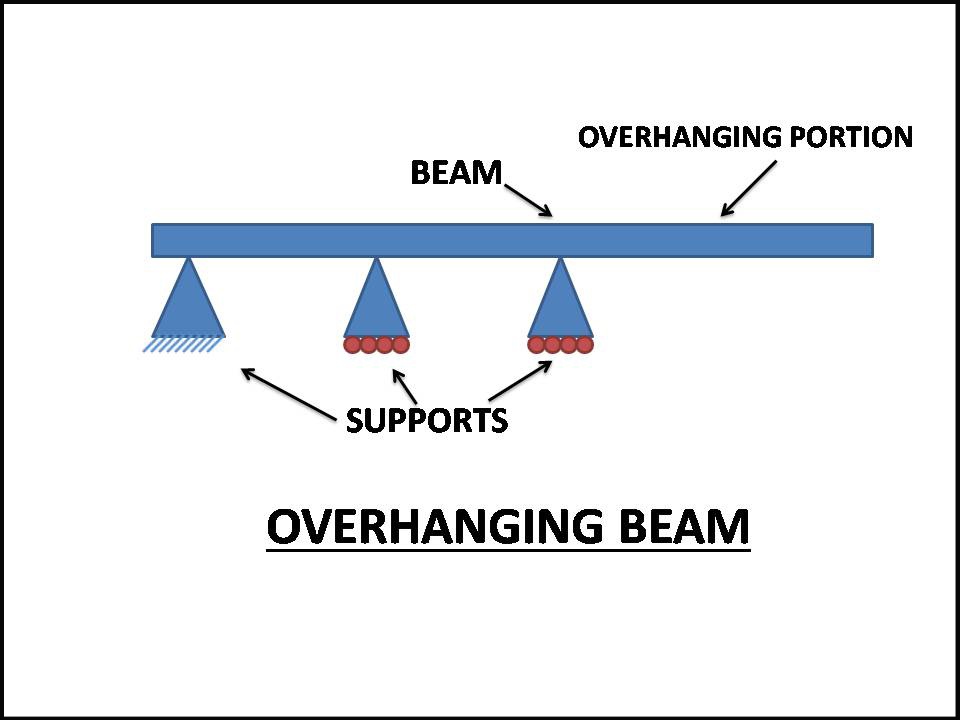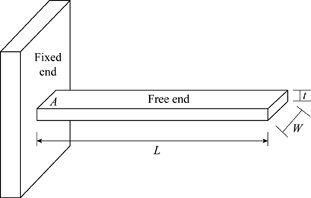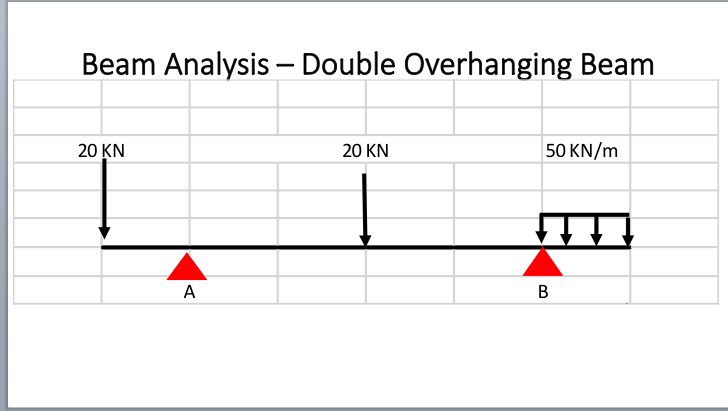Beams are one of the most used structural elements in buildings. They are frequently used to transfer the weight and forces on a structure to the foundations and into the ground, such as a roof to a foundation or a floor to a support column. Wood, steel, concrete, or a combination of these materials can be used to make beams. This article will go over the various types of beams and their applications.
What are Beams?
Beams are structures that civil engineers and construction workers build and use to support larger structures. These structural elements support the weight of a building, allowing for stable and strong occupational conditions.
If you work in construction, engineering, architecture, or structure design in general, you may need to understand the differences between beam types in order to know which beam is best for your project and how your choice affects the cost and shape of the structure you’re helping to build.
Also read: Different Types of Roads – Classification of Roads
1. A Simply Supported Beam

Both ends of the beam are simply supported. A hinge supports one end of the beam, while a roller supports the other. The beam can move horizontally thanks to this support. Its beam type is subject to both shear stress and bending movement.
In engineering, a simply supported beam is a common structural element. Here are some key points to keep in mind:
- A simply supported beam has support on both ends, such as a column or a wall, allowing it to freely rotate and translate horizontally.
- Bending stress occurs in the beam as a result of loads applied to it, such as building weight or traffic passing over a bridge.
- The beam is simply held together at both ends. A hinge supports one end of the beam. The maximum bending stress occurs in the centre of the beam, which is the most susceptible to bending.
- The bending stress can be calculated using various mathematical formulas depending on the specific characteristics of the beam and the loads applied to it.
- When designing a simply supported beam, make sure it is strong enough to support the loads placed on it without failing or deflecting too much.
2. Continuous Beam

This beam is like a simply supported beam except that it has more than two supports, one of which is hinged support and the other is roller support. Between these beams, one or more supports are used. It is used in long concrete bridges where the length is too long.
3. Overhanging Beam

The overhanging beam is a cross between a supported and a cantilever beam. The end overhang of this beam is on one or both sides. A roller support is located between the two ends of this beam. Cantilevering and simply supported properties characterize this type of beam.
An “overhanging beam” is a structural element that extends beyond its support points. Here are five important points to remember:
- Overhanging beams are commonly used in building design to create cantilevered structures such as balconies and eaves.
- The length of the overhang and the material used to construct the beam are critical factors in determining its load-bearing capacity.
- Overhanging beams can experience bending moments and shear forces, which must be accounted for in their design.
- Bridges frequently use overhanging beams to support walkways and other structures that extend beyond the main bridge span.
- To ensure the structure’s safety and stability, overhanging beams must be designed in accordance with building codes and regulations.
Also read: Different Types of Slabs
4. Cantilever Beam

Cantilever beams are structural members with one fixed end and one free end. This is a common type of beam found in trusses, bridges, and other structural members. This beam supports a load over a span with shear stress and a bending moment.
A cantilever beam is a structural element that has one end anchored and the other horizontally projecting into space. Here are five important points to remember:
- Cantilever beams are commonly used in building design to create overhanging structures such as balconies, canopies, and roofs.
- The cantilever’s length and the material used to construct the beam are critical in determining its load-bearing capacity.
- Bending moments and shear forces must be taken into account when designing cantilever beams.
- Bridges frequently use cantilever beams to support walkways and other structures that extend beyond the main bridge span.
- To ensure the structure’s safety and stability, cantilever beams must be designed in accordance with building codes and regulations.
5. Fixed Beam

This beam is secured at both ends. It does not permit vertical movement or rotation of the beam. It is only under shear stress and produces no moment in these beams, which are used in trusses and other structures.
A fixed beam is a structural element that is supported on both ends and can withstand rotation at its supports. Here are five key points to remember:
- In building design, fixed beams are commonly used to support floor systems, roof systems, and other horizontal structures.
- Typically, the supports at the ends of a fixed beam are designed to withstand both vertical and horizontal loads.
- Fixed beams can withstand bending moments and shear forces, making them a sturdy and dependable structural element.
- Fixed beams are commonly used in bridge construction, where they span long distances and support heavy loads.
Related: Different Types of Bridges
6. Double Overhanging Beam

A simple beam with both ends extending beyond its support.
A double overhanging beam is a structural element that extends beyond both of its support points. Here are five key points to remember:
- In building design, double overhanging beams are commonly used to create cantilevered structures that project outward from a building’s facade.
- The length of the overhang on each end of the beam, as well as the material used to build it, are important factors in determining its load-bearing capacity.
- Bending moments and shear forces must be accounted for in the design of double overhanging beams.
- Double overhanging beams are commonly used in bridge construction to support walkways or other structures on both sides of the bridge span.
- To ensure the structure’s safety and stability, the design of double overhanging beams must adhere to building codes and regulations.
Conclusion
Beams are an essential component of any construction project, and the load, span, and support conditions determine their type and design. Simple beams are commonly used in residential and small commercial construction projects, whereas continuous beams and T beams are used in larger commercial and industrial projects. Cantilever beams are used where an overhanging structure is required, whereas lintel beams support the weight.
FAQs:
Q1. What are beams and what is their purpose in construction and engineering?
Ans. Beams are structural elements that are commonly used in construction and engineering to support the weight of larger structures, such as buildings, bridges, and trusses. Their purpose is to transfer the loads and forces acting on the structure to the foundation or ground while ensuring stability and strength. Beams can be made from various materials such as wood, steel, concrete, or a combination of these materials. In summary, beams play a crucial role in ensuring the stability and safety of structures and are essential components of modern construction and engineering.
Q2. What is a simply supported beam?
Ans. A simply supported beam is a type of structural element that is supported on both ends by a pin joint or a roller joint, allowing the beam to rotate and deflect freely. The beam is only supported at its ends, and not along its length. Simply supported beams are commonly used in construction and engineering as they are a simple and effective way to support loads and span distances.
Q3. What is an overhanging beam?
Ans. An overhanging beam is a type of beam that has one or both ends extending beyond its supports. This means that the beam is not fully supported at its ends and creates an overhang. The overhanging sections of the beam are called cantilevers. Overhanging beams are used in various engineering and construction applications, such as bridges, balconies, and roofs. They can be designed and analyzed using different methods, including the moment distribution method, slope deflection method, and finite element method, among others.
Q4. What is a cantilever beam?
Ans. A cantilever beam is a type of beam that is supported on one end and is free to move on the other end. In other words, it is a beam that is fixed at one end and extends beyond its support on the other end. Cantilever beams are commonly used in construction and engineering to create overhanging structures such as balconies, bridges, and roofs. They are designed to resist bending and twisting forces and are often used in situations where a traditional simply supported beam would not be feasible or would require additional support.
Q5. What is a fixed beam?
Ans. A fixed beam, also known as a built-in beam or a restrained beam, is a structural element that is supported on both ends and is fixed against rotation at one or both of its supports. The fixed support provides both vertical and horizontal support, as well as resistance to rotation, making the fixed beam stiffer and stronger than simply supported or cantilever beams. The fixed beam is commonly used in bridges, buildings, and other structures where large spans and heavy loads are required.





